
ADHD is like living life with 50 browser tabs open and one of them is playing music, but you can’t find which one. Between inattention, emotional rollercoasters, and never-ending distractions, self-care can feel like an afterthought. But taking care of yourself isn’t a luxury, it’s compulsory.
Let’s break down ADHD-friendly self-care strategies that actually work (including skincare, because why not look good while thriving?).
Understanding ADHD and Its Impact on Mental Health
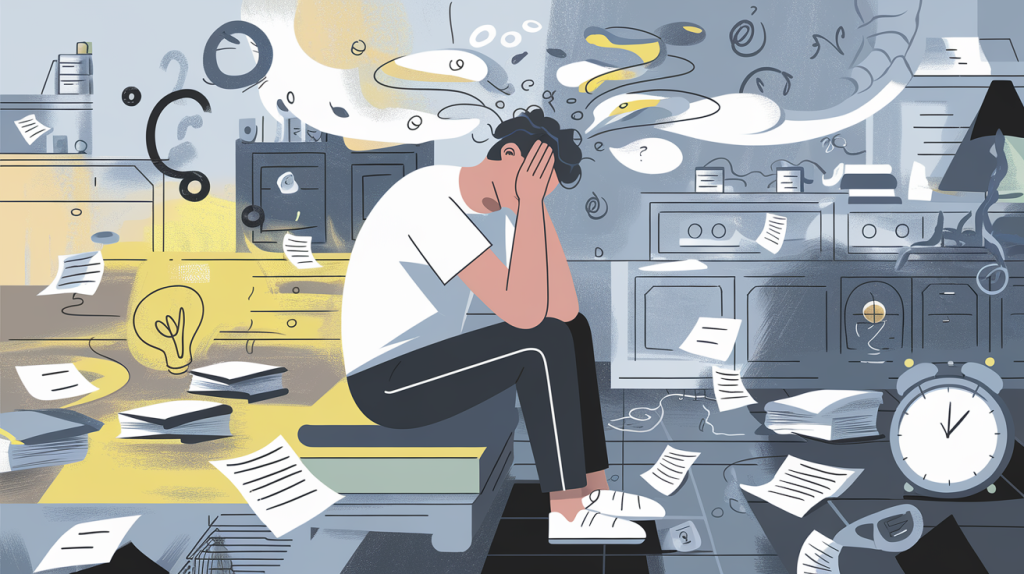
ADHD (Attention Deficit Hyperactivity Disorder) is a chronic condition marked by inattention, hyperactivity, and impulsivity. Its symptoms can sometimes mimic or be mistaken for stress, anxiety, or even physical illnesses, which is why understanding and recognizing ADHD is essential for proper management and mental health support. It affects kids and adults alike, though it often gets misunderstood.
How ADHD Affects Mental Health
The ADHD brain’s struggles with focus, time management, and emotional regulation can amplify stress and mood swings. Research shows that the interplay between the prefrontal cortex and the limbic system can lead to heightened emotional responses. That’s why understanding this link is key to improving your mental and emotional well-being.
Managing ADHD Symptoms with Self-Care
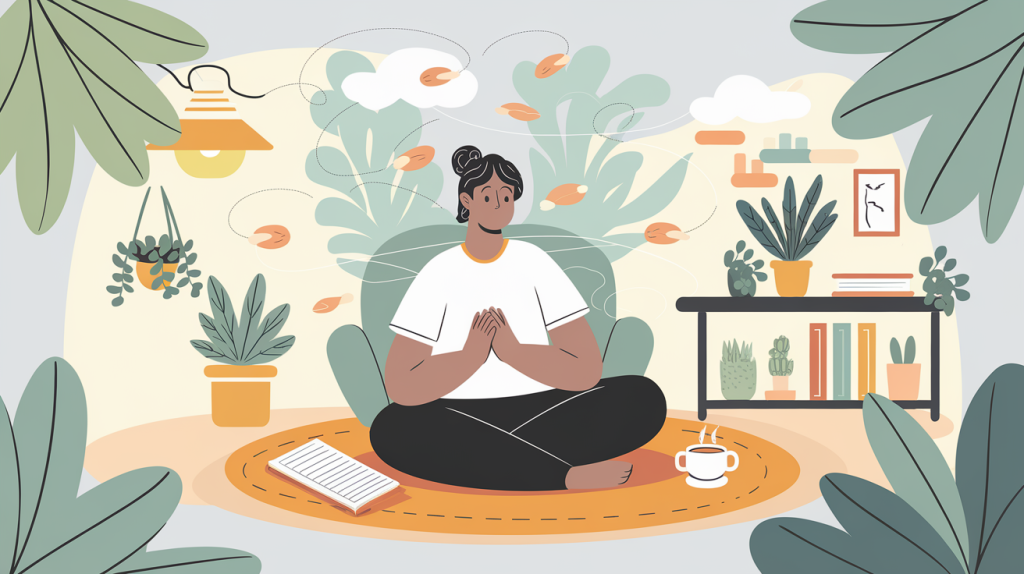
Self-care is your secret weapon for ADHD management. It can help lower your risk of illness, boost your energy, and reduce stress, all essential for improving focus and emotional well-being. By making self-care a priority, you give your brain and body the tools they need to function at their best.
Understanding your unique ADHD symptoms, like inattention, emotional dysregulation, or time management struggles, is the first step. By identifying your challenges, you can create a self-care plan tailored to your needs, making it easier to stay consistent and see real improvements in your mental health and overall well-being. It can help reduce stress, boost focus, and increase energy levels. Think of it as creating a customized game plan for better functioning and better well-being.
The Benefits of Self-Care
- Reduces stress and anxiety
- Improves emotional regulation
- Helps with time management and focus
- Boosts mental and physical health
Creating a Self-Care Plan
- Identify your ADHD challenges: Are you disorganized? Struggling with time management? Feeling emotionally overwhelmed?
- Set clear, small goals: Break tasks into manageable steps, ADHD brains love bite-sized wins.
- Use planners, timers, or apps: Structure helps ADHD brains stay on track.
- Schedule self-care time: Treat it like a non-negotiable appointment.
Tips to Incorporate Self-Care into Daily Life
- Start small, even 5 minutes counts.
- Use reminders or apps to schedule breaks.
- Focus on what brings you joy and relaxation.
- Make self-care part of your routine, like brushing your teeth.
Emotional Health and ADHD
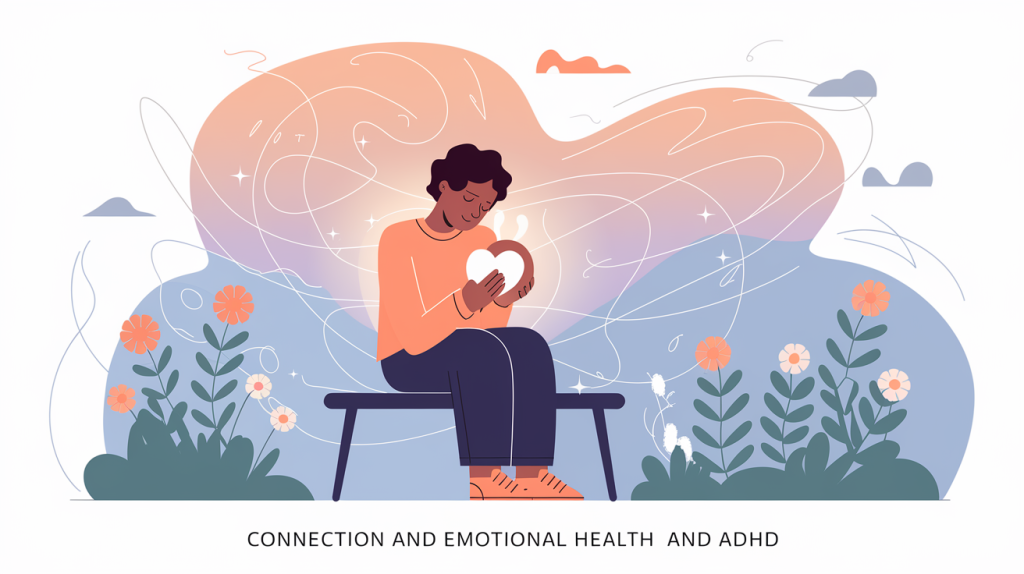
Let’s talk emotions, because ADHD makes them big. Emotional dysregulation can cause mood swings, intense feelings, and stress, making it harder to navigate daily challenges. Developing strategies to improve emotional regulation is crucial for ADHD management and can significantly enhance overall well-being by reducing stress, anxiety, and emotional overwhelm. It’s not you, it’s your brain chemistry.
Strategies for Better Emotional Regulation
- Practice mindfulness: Deep breathing, meditation, or mindful movement reduces stress and increases focus.
- Self-compassion: Acknowledge your progress. Small wins count.
- Develop coping tools: Journaling, talking to a friend, or creating a calm-down toolkit can work wonders.
Building a Supportive Environment for ADHD

Your space matters. A cluttered environment equals a cluttered mind, especially with ADHD. Start by breaking large tasks into smaller, manageable steps, for example, “clean the room” becomes “pick up clothes,” then “organize the desk.” Timers are your best friend here: set one for 20 minutes and challenge yourself to see how much you can get done.
Pair this with clocks, planners, or visual schedules to help you stay on track throughout the day. Digital or physical tools can keep you organized, prevent procrastination, and ensure you’re sticking to your routine because ADHD brains thrive with structure and clear time blocks.
For time management, use apps, planners, or visual schedules to stay on track. Add buffer time to avoid feeling rushed, and set clear priorities by tackling the most important tasks first. Keeping your space tidy and your schedule structured can make managing ADHD symptoms feel far less overwhelming.
Create an Organized Space
- Use organizers, planners, and timers to stay on track.
- Break tasks into smaller steps (“clean the room” becomes “pick up clothes”—done!).
- Make your space peaceful. Calm surroundings improve focus.
Time Management Tips
- Use timers or alarms to avoid procrastination.
- Plan buffer time to manage ADHD-related lateness.
- Prioritize tasks and break them into steps to prevent overwhelm.
Build Your Support Network
- Surround yourself with people who get it.
- Join ADHD support groups or online communities.
- Seek professional help, like therapy or ADHD coaching, when needed.
Mindfulness and Meditation for ADHD

Mindfulness might sound impossible when you have ADHD, but it works. These practices not only improve focus and emotional regulation but also play a key role in stress reduction—a crucial benefit for managing ADHD. By grounding your mind in the present moment, mindfulness helps calm racing thoughts, reduce overwhelm, and create a sense of balance amid the chaos. It helps improve focus, emotional regulation, and stress reduction.
Easy Mindfulness Practices
- Deep Breathing: Inhale for 4 counts, hold for 4, exhale for 4.
- Mindful Movement: Try walking slowly and focusing on each step.
- Grounding Exercises: Name 5 things you see, 4 you feel, 3 you hear—you get the idea.
Exercise and Physical Activity for ADHD

Exercise isn’t just for fitness—it’s for your brain. Physical activity improves focus, reduces impulsivity, and enhances emotional regulation.
Find Activities That Work for You
- Pick activities you enjoy: Yoga, swimming, dancing, or even skipping rope.
- Start small: 10 minutes of movement is a win.
- Add fun: Pair exercise with music, podcasts, or a workout buddy.
Sleep and ADHD: Strategies for Better Rest
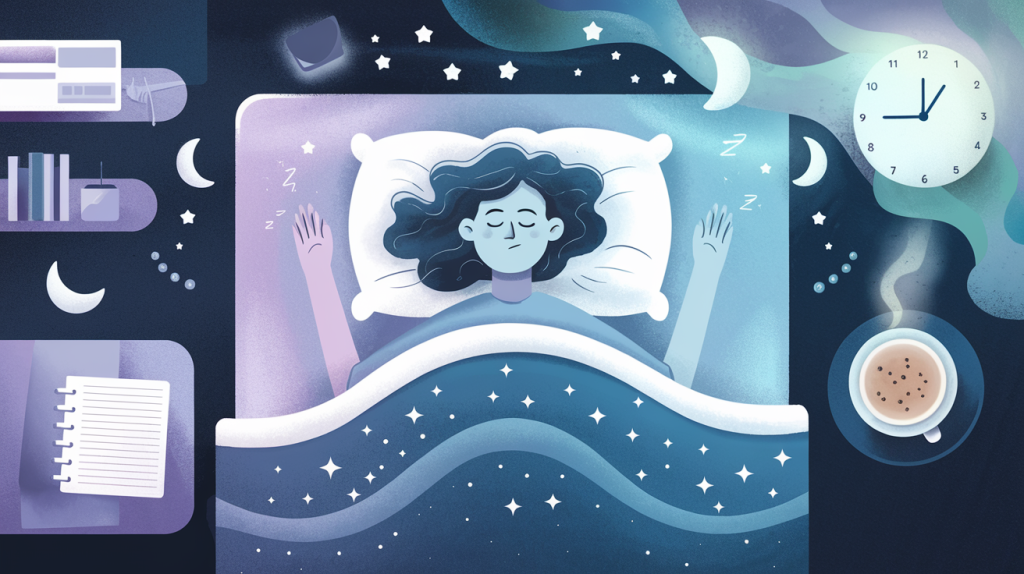
Sleep is ADHD’s secret kryptonite. Lack of sleep worsens inattention, hyperactivity, and impulsivity. Prioritizing rest can transform your energy and focus.
Tips for Improving Sleep
- Establish a consistent bedtime routine.
- Avoid screens and stimulating activities before bed.
- Create a calming sleep environment: dark, cool, and quiet.
- Add a relaxing pre-bed activity like skincare.
Stress Management and ADHD

Stress and ADHD can fuel each other. It can become a vicious cycle that amplifies inattention, impulsivity, and emotional dysregulation. Managing stress isn’t just helpful; it’s crucial for keeping ADHD symptoms in check and improving overall well-being.
Stress-Relief Strategies That Work
- Break It Down: Overwhelm often happens when tasks feel too big. Break projects into small, manageable steps.
- Move Your Body: Exercise releases endorphins, which naturally reduce stress and boost mood.
- Take Breaks: Schedule short, intentional breaks throughout your day to reset and refocus.
- Practice Mindfulness: Deep breathing, grounding exercises, or even a quick walk can calm your mind.
- Set Boundaries: Say no to things that add unnecessary stress and protect your time and energy.
Your Stress-Relief Toolkit
Create a go-to list of calming activities, like:
- Listening to music or a podcast
- Taking a hot shower or bath
- Journaling your thoughts
- Using sensory tools like stress balls or fidgets
Managing stress doesn’t have to be perfect, focus on small, consistent efforts to feel more balanced and in control. The key is finding what works for you and making it part of your routine.
Skincare as Self-Care for ADHD
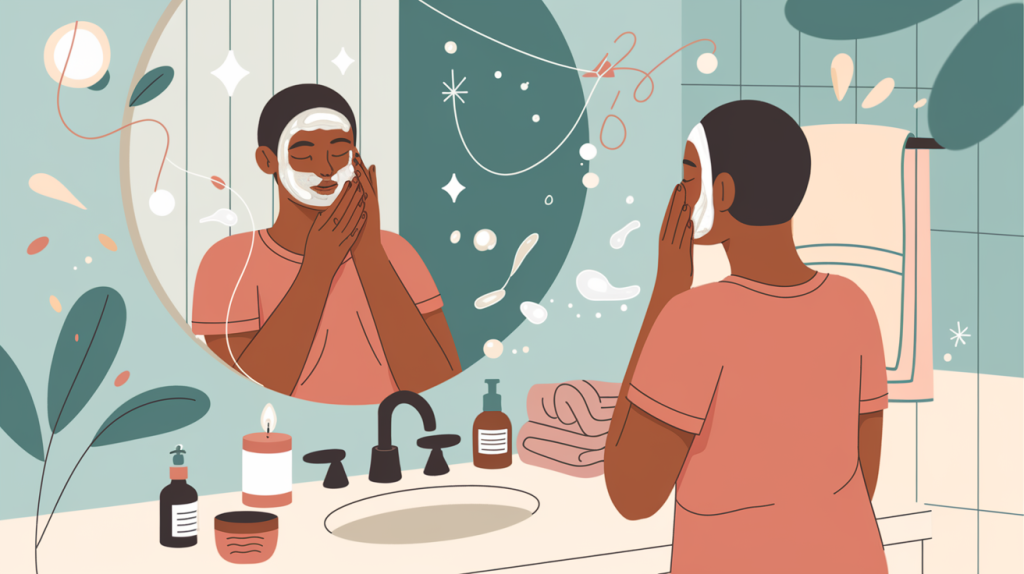
Skincare deserves its own shout-out. Why? Because clear, structured routines can do wonders for mental health and emotional well-being, especially for people with ADHD. When life feels chaotic, a simple skincare ritual creates consistency and calm, offering a moment to slow down and focus on yourself. Plus, the sensory experience—warm water, soothing textures—can be grounding, helping to reduce stress and restore balance in your day.
Because clear, simple routines can help reduce stress and improve emotional well-being, which is a win for ADHD brains. Structured habits like skincare provide moments of calm and accomplishment, which can boost mood and create balance in your day.
Simple ADHD Skincare Tips
- Stick to 3 steps: Cleanser, moisturizer, sunscreen.
- Tie it to a habit: After brushing your teeth? Do skincare.
- Make it fun: Light a candle, play music, and treat it as me-time.
- Set reminders: Sticky notes or phone alarms work wonders.
Seeking Professional Support and Therapy
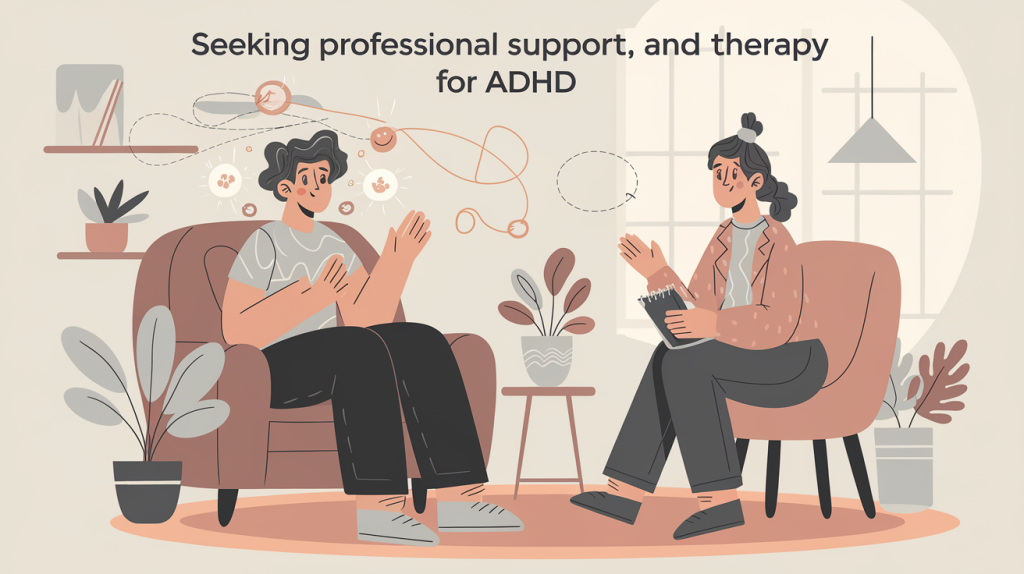
If self-care feels overwhelming, professionals can help. ADHD-focused therapy or coaching offers personalized strategies for managing symptoms, improving emotional regulation, and reducing stress.
Benefits of Therapy for ADHD
- Learn healthy coping skills for stress and emotions.
- Create strategies for managing ADHD symptoms.
- Gain a safe space to work through challenges.
Final Thoughts: Prioritize Your Self-Care
Self-care isn’t a luxury, it’s a game-changer for managing ADHD symptoms, improving emotional well-being, and boosting overall mental health. Whether it’s a quick meditation, a simple skincare routine, or a 10-minute walk, you deserve the time and effort.
Remember: Progress, not perfection. ADHD brains are wired differently so celebrate the small wins, find what works for you, and make self-care a non-negotiable part of your life. You’ve got this!
